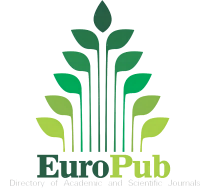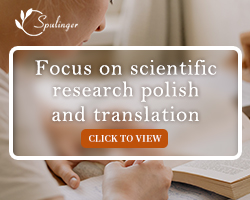Observation of the Clinical Efficacy of Traditional Chinese Medicine Eye Patching Combined with Acupuncture for the Treatment of Amblyopia in Children and Adolescents
DOI:
https://doi.org/10.62767/jecacm602.5328Keywords:
Traditional Chinese medicine eye patching, acupuncture, amblyopiaAbstract
Background: Amblyopia is an eye disease related to visual development. If it is not treated properly or in a timely manner, it will have a serious impact on the patient's vision and quality of life. This study observed the clinical efficacy of traditional Chinese medicine (TCM) eye patching combined with acupuncture for the treatment of amblyopia in children and adolescents. Methods: Patients aged 5 to 8 years (including 5 and 8 years old) with anisometropic amblyopia who visited the Ophthalmology Department of Jinzhong City Traditional Chinese Medicine Hospital from 2018 to 2025 were selected. These patients were randomly divided into the experimental group and control group, with 20 cases in each group using random number table methods. Both groups used the conventional correction-based occlusion method, while the experimental group additionally employed TCM eye patching combined with acupuncture therapy (local acupoints: Sibai, Taiyang, Zanzhu, Yintang, and Sizhukong; distal acupoints: Hegu, Neiguan, and Zusanli). The acupuncture therapy was performed once daily, with the needles retained for 30 min, based on the balanced reinforcing and reducing principle. The treatment course was 10 days, with vision and refraction rechecked weekly, for a total of three courses. After the experiment, the indicators and therapeutic effects of the two groups were compared. Results: Prior to the experiment, there was no significant difference in age and gender between the experimental and control groups (p > 0.05). After the treatment course, in the experimental group, 2 patients’ eyes were cured, 14 patients’ eyes were improved, and 4 patients’ eyes showed no changes, with a total effective rate of 80%, while in the control group, 8 patients’ eyes were improved, 12 patients’ eyes showed no changes, and 0 patient’s eyes were cured, with a total effective rate of 40%. The therapeutic effect of the experimental group was superior to that of the control group (p < 0.05). After treatment, the best corrected visual acuity of the two groups was significantly higher than that before treatment, and that of the experimental group was higher than that of the control group (p < 0.05). Conclusion: Both the experimental and control groups showed some improvement in vision after treatment. Acupuncture around the eyes combined with TCM external application can effectively improve the corrected visual acuity of children with anisometropic amblyopia.
References
Simons K. Development of the primary visual cortex: Recent advances and old questions. The Journal of Neuroscience 2012; 32(38): 13132-13138.
Repka MX, Kraker RJ, Wallerstein GL, et al. Randomized trial of patching regimens for treatment of moderate amblyopia in children. Archives of Ophthalmology 2003; 121(3): 360-367.
He J, Xiang F, Zeng Y, et al. Atropine for the treatment of amblyopia: A systematic review and meta-analysis. Medicine 2016; 95(46): e5251.
Butler PD, Sokol S, Beck RW, et al. Computer-based training to improve visual function in amblyopia: A randomized clinical trial. JAMA Ophthalmology 2013; 131(5): 550-558.
Birch EE. Amblyopia and binocular vision. Progress in Retinal and Eye Research 2013; 33: 67-84.
Wei QP, Sun YH. Clinical Diagnosis and Treatment Thinking of Traditional Chinese Medicine on Ophthalmology. People's Medical Publishing House; 2016.
Wang Y, Huang XR, Lei P. The clinical research progress of acupuncture and moxibustion on amblyopia. Journal of Traditional Chinese Ophthalmology 2019; 29(1): 68-71.
Cao ZX, Liu AG, Zhu TT, et al. Research progress on the molecular biological mechanism of acupuncture treatment for amblyopia. Acupuncture Research 2018; 43(3): 5.
Zhou J, Li L, Zhang LX, et al. Clinical Observation on the Treatment of Children's Amblyopia with Traditional Chinese Medicine. Journal of Traditional Chinese Ophthalmology 2015; 25(4): 256-259.
Cui HF, Chen C, Yu L, et al. Clinical research on acupuncture treatment of amblyopia. Journal of Changchun University of Chinese Medicine 2010; 26(5): 704-706.
Zhang QY, Zhou HJ. Deep stabbing of Xiaguan acupoint in the treatment of 64 cases of amblyopia in children. Journal of Integrated Traditional Chinese and Western Medicine 2010; 19(30): 3303.
Ge HL, Liu SQ. Observation on the therapeutic effect of acupuncture in the treatment of refractory amblyopia. World Journal of Integrated Traditional and Western Medicine 2009; 4(8): 567-569.
Cao ZB, Hu WD, Ke YQ. Combined acupuncture and medication treatment for 62 cases of amblyopia in Children. Journal of Li-Shizhen Traditional Chinese Medicine 2006; 17(2): 251.
Zhou JJ, Dai HB. The research progress of clinical signs of amblyopia. Chinese Journal of Strabismus & Pediatric Ophthalmology 2019; 27(4): 35.
Li JB. The Yellow Emperor's Inner Classic. Guangdong Science and Technology Press; 2018.
Chen JL, Deng SY. A review on traditional Chinese medicine treatment of amblyopia. Clinical Journal of Chinese Medicine 2024; 16(33): 129-133.
Wang YP, Wang YY. Analysis of the development course of traditional Chinese medicine standardization and recommendations on future work. Guidelines and Standards in Chinese Medicine 2023; 1(1): 1-8.
Wang Y, Huang XR, Lei P. The clinical research progress of acupuncture and moxibustion on amblyopia. Journal of Traditional Chinese Ophthalmology 2019; 29(1): 68-71.
Zhao Y. Clinical Observation on the Treatment of Children's Amblyopia by Massage and Acupressure. China's Naturopathy 2018; 26(10): 40-41.
Yan X, Zhu T, Ma C, et al. A meta-analysis of randomized controlled trials on acupuncture for amblyopia. Evidence-Based Complementary and Alternative Medicine 2013; 2013: 648054.
Cao ZX, Liu AG, Zhu TT, et al. Molecular Biology of the Treatment of Amblyopia with Acupuncture: a Review of Recent Research. Zhen Ci Yan Jiu 2018; 43(3): 189-193.
Published
Data Availability Statement
Data supporting this study are included within the article.
Issue
Section
License
Copyright (c) 2025 Li Jin (Author)

This work is licensed under a Creative Commons Attribution 4.0 International License.







